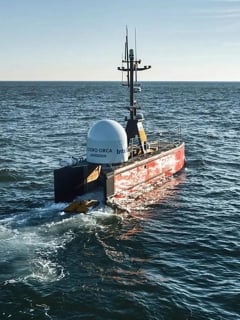Shipowners and operators have long relied on traditional maintenance approaches, such as scheduled inspections and reactive repairs, to keep their fleets maintained. While these methods have been effective to a certain extent, they often fall short in preventing unexpected breakdowns and minimising costly periods of downtime. The unpredictable nature of the seas demands a more sophisticated, reliable, and proactive approach to vessel maintenance.
Enter data-driven condition-based maintenance (DCBM), which leverages real-time data to predict equipment failures and optimise maintenance schedules. Lloyd's Register, NYK Line, and Monohakobi Technology Institute recently partnered to release a report, which evaluates DCBM practises along with its challenges and ways in which it can be improved. The research also looks at evolving technologies and lessons from aviation such as machine learning.
The report shows how DCBM can support shipowners in their quest for enhanced efficiency, reduced operational costs, and a lighter workload for their sea-going workforce. By continuously monitoring the health of critical systems, DCBM provides early warnings of potential issues, allowing for timely interventions that prevent minor problems from escalating into major failures.
The promise of DCBM extends beyond mere efficiency gains. It represents a full transformation in maintenance strategy, aligning with the industry's broader goals of sustainability, safety, and technological advancement.
As the maritime sector grapples with increasing regulatory pressures and the need for greener operations, the adoption of DCBM could play a pivotal role in meeting these challenges. However, the path to fully harnessing the benefits of DCBM has a number of key obstacles.

Imprecise maintenance and inspection protocols
One of the fundamental challenges in implementing DCBM is the imprecision in maintenance and inspection protocols. Current processes often suffer from either an overload of tasks or a lack of crucial maintenance activities. This ambiguity not only increases human factors costs, but also raises the risk of errors during maintenance, potentially leading to unexpected faults.
Data-driven improvement can address this challenge. By harnessing historical and current operational data, shipowners can refine maintenance and inspection schedules to suit unique scenarios.
Implementing analytics-driven diagnostic systems equipped with advanced algorithms and precise measurement tools can ensure that maintenance protocols are tailored to the specific needs of each vessel and removing the uncertainty that surrounds vague inspection protocols.
Deviations from scheduled maintenance and inspections
Another common hurdle shipowners face for DCBM adoption is the lack of understanding around prescribed maintenance and inspection timelines. Failure to adhere to scheduled maintenance timings is often a leading cause of unexpected system failures, resulting in increased downtime and operational costs.
To overcome this challenge, shipowners can leverage digital platforms to accurately record maintenance activities. By digitising maintenance processes, shipowners can streamline data collection and analysis, enabling them to identify deviations from scheduled maintenance more effectively.


Accuracy in condition assessment
The success of DCBM hinges on the accuracy of condition assessment. However, vague or undefined criteria for identifying hazardous operating conditions, coupled with insufficient diagnostic data, can compromise DCBM effectiveness. These information gaps often lead to operational failures and pose significant safety risks to crew members.
Data-driven methods offer a solution to this challenge by uncovering trends and early warning signs of unsafe operating conditions. By analysing operational data, shipowners can proactively identify potential system failures and take preventive measures to mitigate risks.
Insufficient troubleshooting response
A lack of an effective response strategy to system failures can lead to delays in initiating corrective actions, leading to longer downtimes and increasing the risk of injuries. Shipowners must develop robust troubleshooting protocols to address system failures promptly and minimise their impact on operations.
While no specific analytics-driven solution is recommended for this challenge, there is an urgent need for additional research and development in this domain. By investing in innovative technologies and fostering collaboration among industry stakeholders, shipowners can enhance their troubleshooting capabilities and ensure timely response to system failures.
DCBM holds great promise for the maritime industry, the shift to data-driven processes offers an opportunity to achieve a significant return on investment by employing new methods of maintenance management that can reduce operational downtime and maximise the value of fleet assets.
By embracing data-driven approaches and investing in advanced technologies, shipowners can overcome these hurdles and usher in a new era of proactive maintenance in the maritime sector.
Read the report: Data-Driven Condition Based Maintenance







